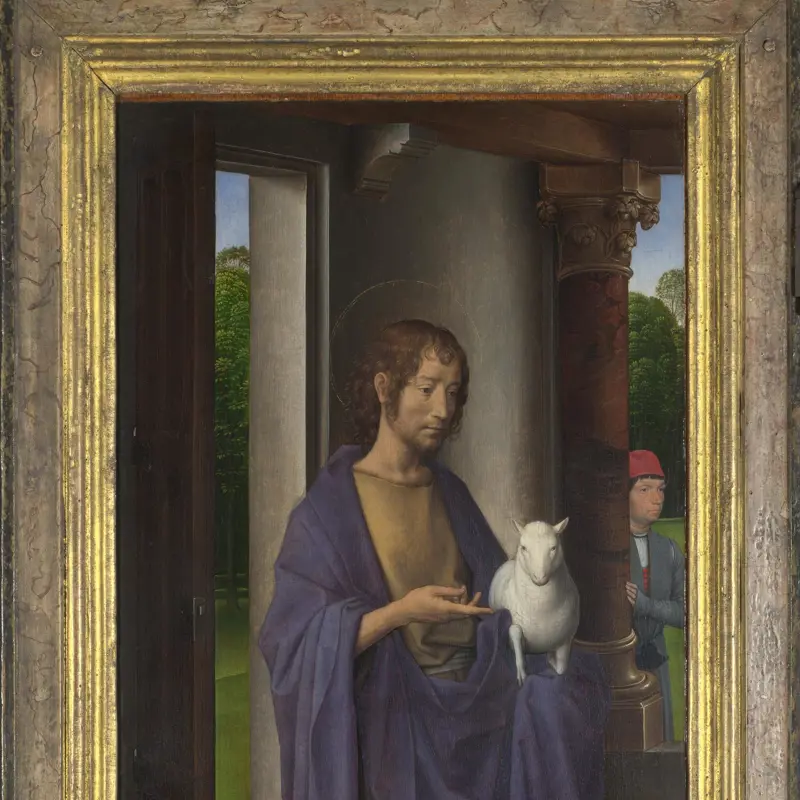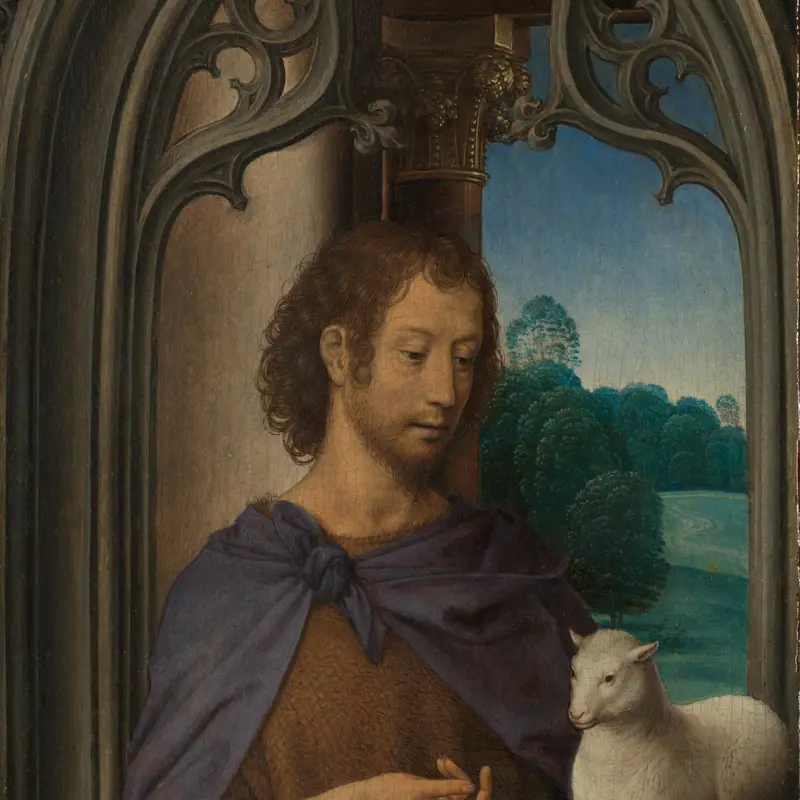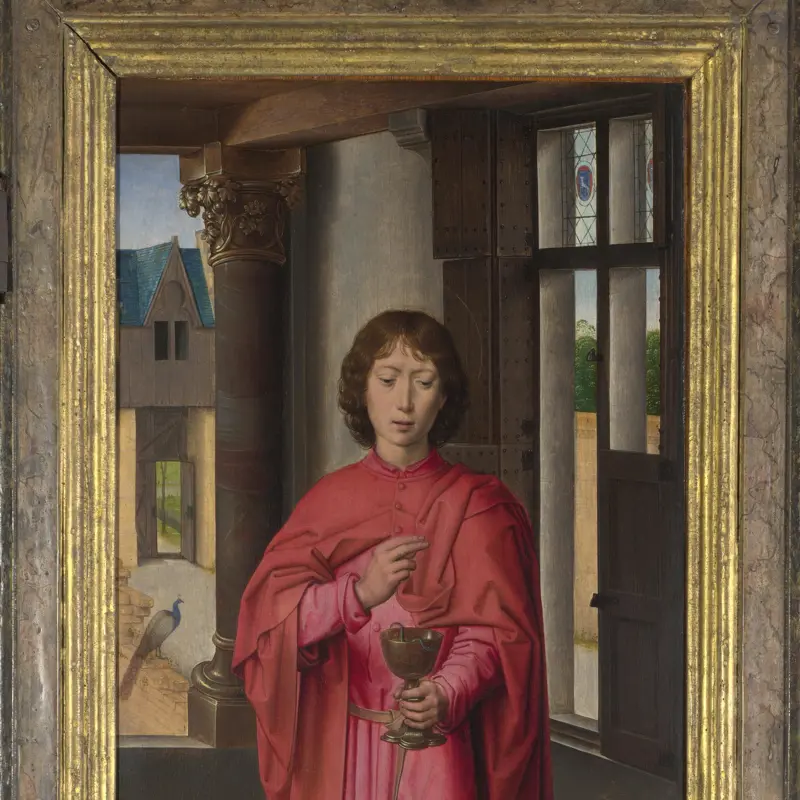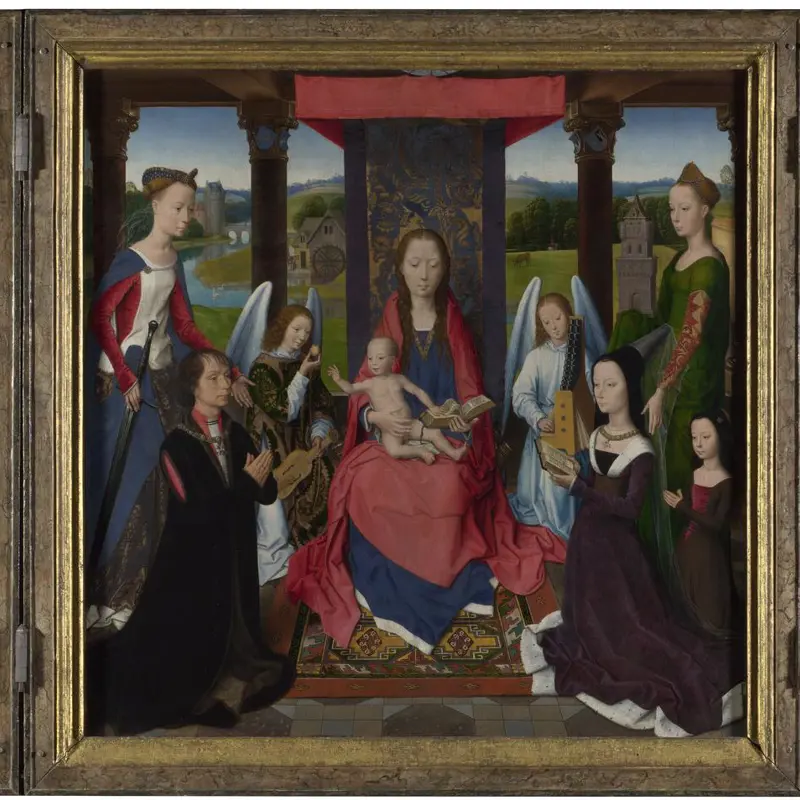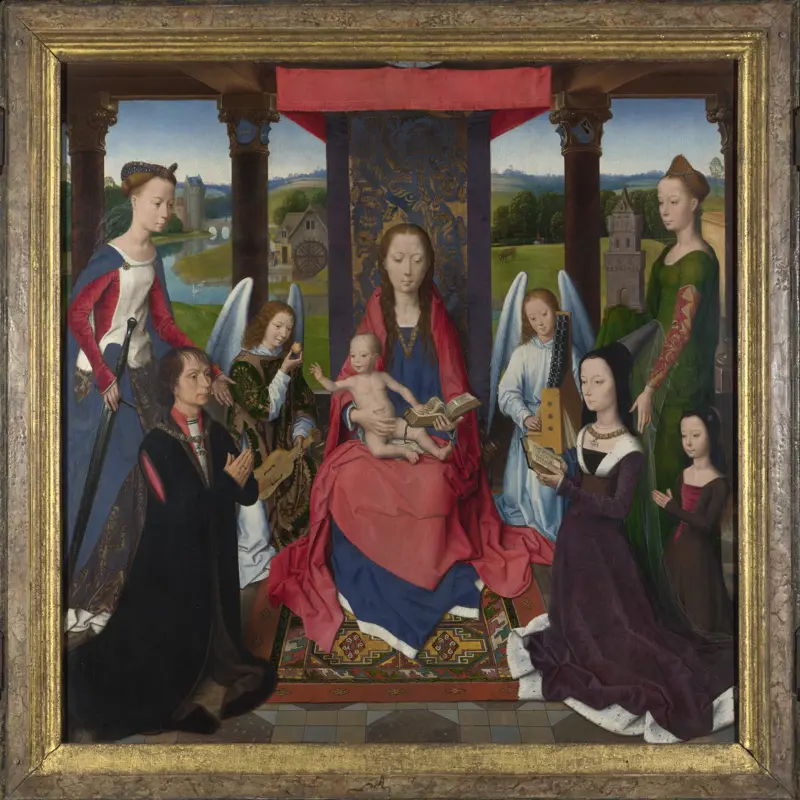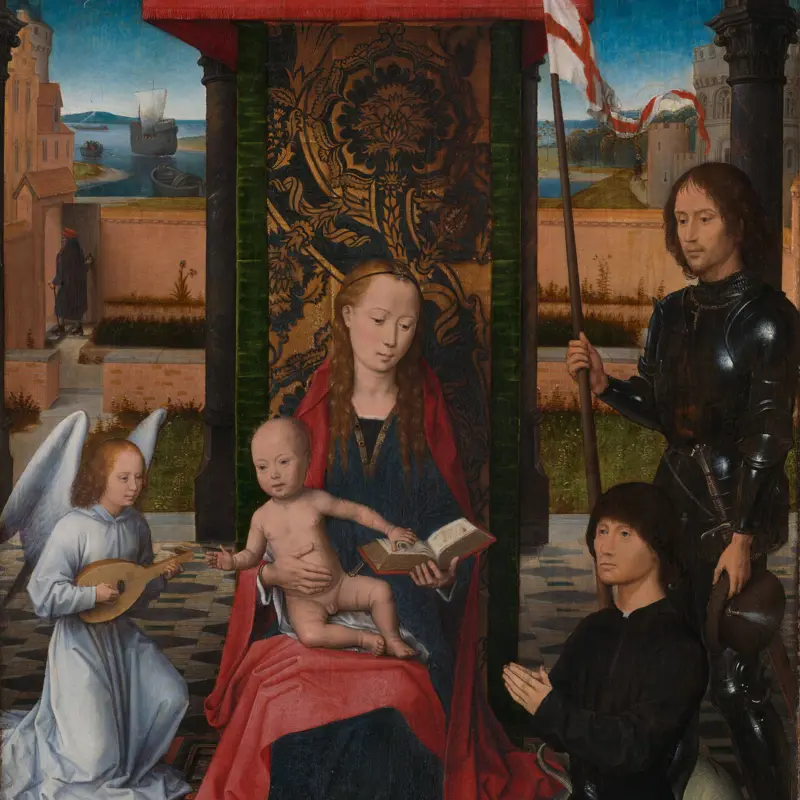Hans Memling, 'Virgin and Child', perhaps about 1475
About the work
Overview
The Virgin Mary, bareheaded and richly dressed, holds the naked Christ Child, who rests on a white cushion on a ledge. We are not sure whether the painting was once part of a triptych (a painting made up of three sections) or stood alone. The infant Christ could be blessing a donor in a panel on his right, or gesturing and speaking to the viewer.
Hans Memling ran a large and well-organised workshop, and tended to recycle designs based on workshop patterns with little variation. While the figures of the Virgin and Christ resemble those in other of Memling’s works, the painting has sometimes been thought to be by a follower. But the very detailed and delicate painting technique suggest the hand of Memling himself. Close inspection reveals that the white catchlights in Christ’s left eye are made up of seven separate brushstrokes.
Key facts
Details
- Full title
- Virgin and Child
- Artist
- Hans Memling
- Artist dates
- active 1465; died 1494
- Date made
- perhaps about 1475
- Medium and support
- oil on wood
- Dimensions
- 37.9 × 28 cm
- Acquisition credit
- Presented by Queen Victoria at the Prince Consort's wish, 1863
- Inventory number
- NG709
- Location
- Room 64
- Collection
- Main Collection
- Previous owners
- Frame
- 20th-century Replica Frame
Provenance
Additional information
Text extracted from the ‘Provenance’ section of the catalogue entry in Lorne Campbell, ‘National Gallery Catalogues: The Fifteenth Century Netherlandish Schools’, London 1998; for further information, see the full catalogue entry.
Exhibition history
-
2014Making ColourThe National Gallery (London)18 June 2014 - 7 September 2014
Bibliography
-
1945Davies, Martin, National Gallery Catalogues: Early Netherlandish School, London 1945
-
1953M. Davies, The National Gallery, London, Les Primitifs flamands. I, Corpus de la peinture des anciens Pay-Bas méridionaux au quinzième siècle 3, 2 vols, Antwerp 1953
-
1955Davies, Martin, National Gallery Catalogues: Early Netherlandish School, 2nd edn (revised), London 1955
-
1967M.J. Friedländer, Early Netherlandish Painting, eds N. Veronée-Verhaegen and H. Pauwels, trans. H. Norden, 14 vols, Leiden 1967
-
1987Davies, Martin, National Gallery Catalogues: The Early Netherlandish School, 3rd edn, London 1987
-
1998Campbell, Lorne, National Gallery Catalogues: The Fifteenth Century Netherlandish Paintings, London 1998
-
2001
C. Baker and T. Henry, The National Gallery: Complete Illustrated Catalogue, London 2001
About this record
If you know more about this work or have spotted an error, please contact us. Please note that exhibition histories are listed from 2009 onwards. Bibliographies may not be complete; more comprehensive information is available in the National Gallery Library.


